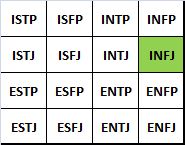Time is an intangible – we can’t touch it, taste it, smell it, hear it or see it – yet we do sense it – and we know it is valuable. A precious commodity we call lifetime. We often treat lifetime as it if were tangible – something that we can see, hear, smell, taste and touch – something like money. We often hear the phrase “time is money” and we say things like “spending time” and “wasting time” – as if it were money. But time is not money; we cannot save time, we cannot buy time, and we all get the same amount of time per day to use.
Another odd thing about time is that we sense that it moves in one direction – from past to future with now as the transition. This creates an interesting discontinuity: if we look forward from now into the future we perceive an infinite number of possibilities; yet if we look backwards from now into the past we see only one actuality. That is really odd – Now is when Infinity becomes One.
So, how does that insight help us make a choice? Well, suppose we have decided what we want in the future and are now trying to make a choice of what to do next; to plan our route to our future desired goal. Looking from now forwards presents us with a very large number of paths to choose from, none of which we can be sure will lead us safely to where we want to get to. So what happens? We may become paralysed by indecision; we may debate and argue about which path to take; we may boldly step out on a plausible path with hope and courage; or we may just guess and stumble on with blind faith. Which we choose seems more a reflection of our personality than a rational strategy. So let us try something else – let us project ourselves into the future to the place where we want to be; and then let us look backwards in time from the future to the present. Now we see a single path that led to where we are; and by unpicking that path we can see that each step of it had a set of necessary and sufficient pre-conditions which, with the addition of time, moved us forward along the path. Hindsight is much clearer than foresight and each of us has a lifetime’s worth of hindsight to reflect on; and the cumulative hindsight of history to draw on. This is not an exercise in fantasy; we already have what we need.
To make our choice we start with the outcome we want and ask the question “What are the immediately preceeding necessary and sufficient conditions?” Then for each condition we ask the question “Does that condition already exist?” If so then we stop – we need go no further on this side branch; and if not then we repeat the Two Questions and we keep going until we have linked our goal back to pre-conditions that exist. All the pre-conditions in the map we have drawn are necessary but we do not yet have all of them. Some are only dependent on pre-conditions that exist – these are the important ones because they tell us exactly what to focus on doing next. Our choice is now obvious and simple – though the action may not be easy. No one said the journey would be easy!

